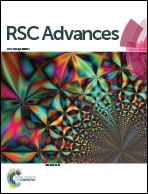Plasma-modified SnO2:F substrate for efficient cobalt selenide counter in dye sensitized solar cell
Abstract
Cobalt selenide (Co0.85Se) counter electrodes (CEs) were synthesized in situ on plasma-treated fluorine-doped tin oxide (FTO) substrates using a hydrothermal approach. FTO glass substrates were treated using O2/Ar direct current (DC) plasma for 5 min prior to the cobalt selenide growth. It was found that Co0.85Se developed horizontally and vertically oriented, submicron or micron sized, and tremelliform-like structures on the plasma-modified FTO surface. This unique Co0.85Se nanomaterial had a much larger accessible surface area, more active catalytic sites, and better catalytic properties compared to the case without plasma treatment. The electronic and ionic processes in dye sensitized solar cells (DSSCs) based on cobalt selenide CEs with or without plasma treatment as well as the Pt CE were analyzed and compared. The device with the Co0.85Se on the plasma-treated FTO produced an energy conversion efficiency of 8.04%, which is significantly superior to that for the DSSC with the Pt CE (7.66%) and also higher than that (7.88%) for the device with the Co0.85Se CE on the pristine FTO without plasma treatment. Plasma treatment of transparent conducting oxides has been proposed as an effective method for in situ deposition of high-quality inorganic compound CE nanomaterials and improving the electrocatalytic activities of inorganic compound CEs.


 Please wait while we load your content...
Please wait while we load your content...